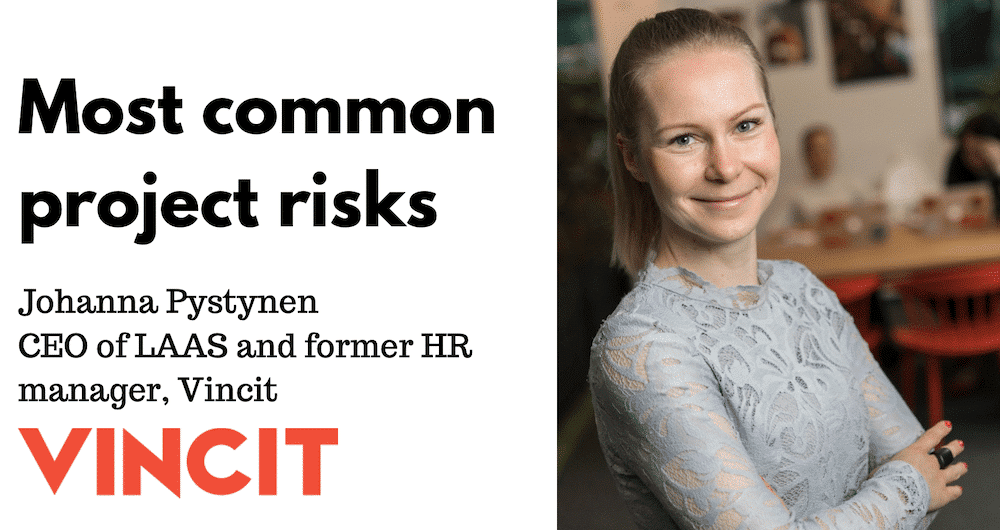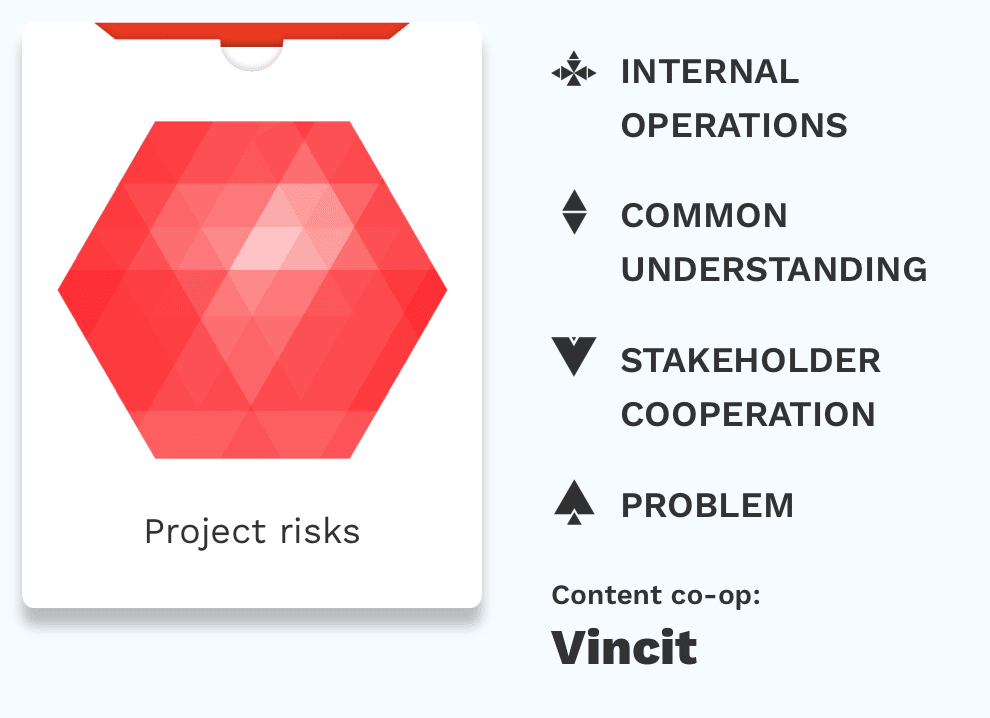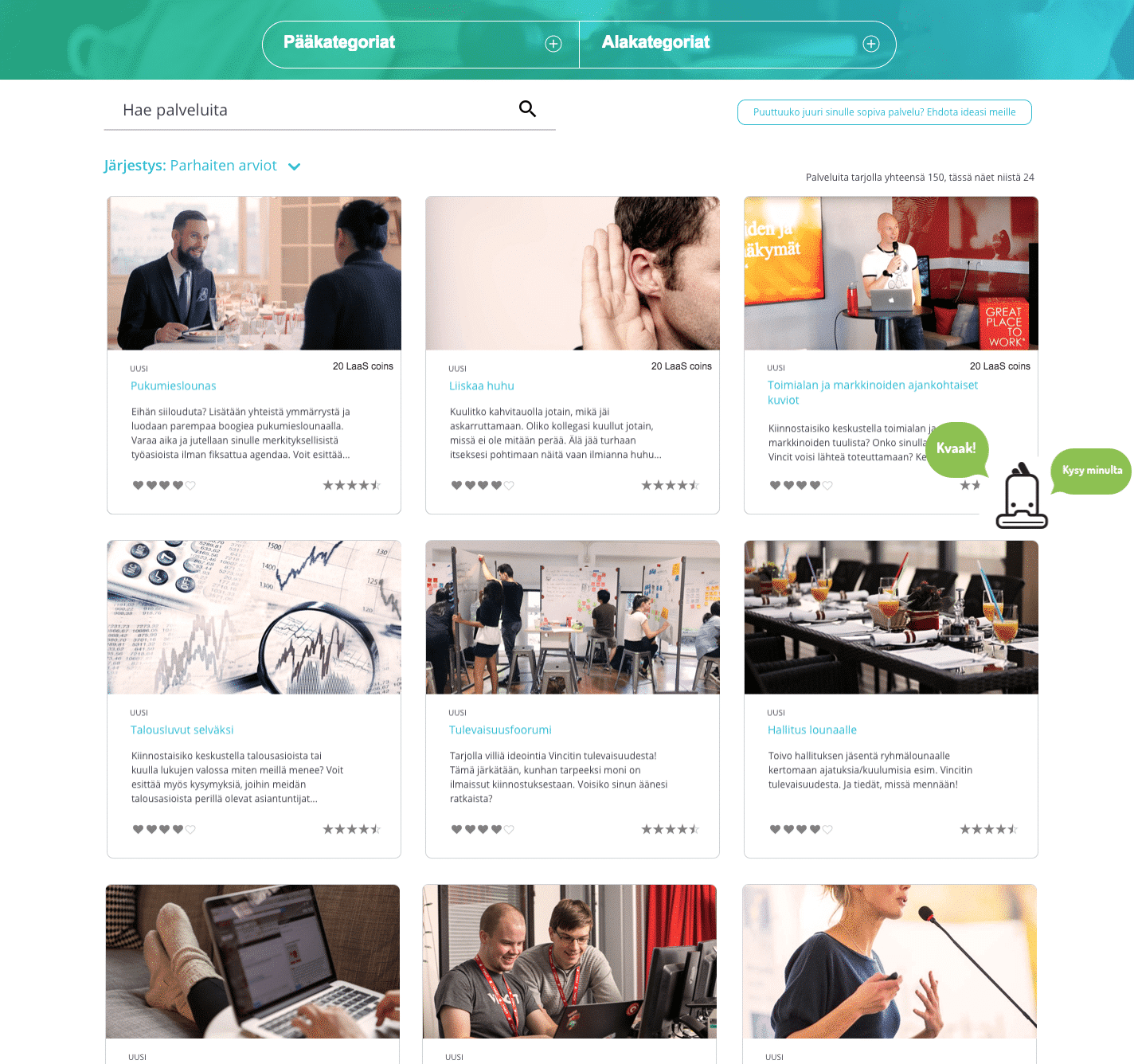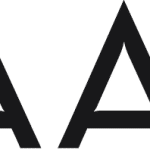The most common project risks identified by Vincit as a game. Interview with Johanna Pystynen, Vice President, Human Resources, Vincit Plc

Vincit is a software house awarded as the best workplace in Europe (2016). Johanna Pystynen is Vincit’s human resources manager and CEO of the LaaS project.
Topaasia has done several game decks with Vincit to support team’s operations and business: Retrospective, Successful Project, Business Development, Purpose, and most recently Project Risks, designed to help project members discuss the risk factors affecting the project. The contents of the deck are compiled from the most likely risk factors for projects identified by Vincit in their internal research.
Summary:
Why was this game made?
-We wanted to help our teams identify and anticipate the factors that may pose risks to the projects or on the other hand also the opportunities that will help the project succeed, Johanna says about the idea behind the game.
Before Projects deck Vincit did with Topaasia theSuccessful project-deck – deck. In the latter, the focus is on the people who do the project work and their learning and competence goals. Projects is a deck focused on project management and the overall project risks identified by Vincit.
-The goal was to help say the things that would not otherwise be discussed with the team at the beginning of the project and to bring to the table the things that really need to be solved in order for the project to be as successful as possible, Johanna summarizes.

Deck themes, ie suites:
- Spades – The problem and the action built around it
- Cross – Activities of your own team and organization during work
- Diamonds – Maintaining common understanding during work
- Hearts – Stakeholder cooperation and preparedness
How did we end up in these suites?
-We collected the typical obstacles we usually encounter in projects from our employees and project leaders. They were grouped into different themes that gave birth to those four suites of the deck. In other words, we recognized that we were repeating certain aspects and started making them into cards, Johanna sums up.
A few sample cards fromProjects deck:

-As an engineering organization, agile methods and project management tools are often very familiar to us. Instead, talking about other themes can sometimes be overlooked, such as how the team resolves conflicts, or whether there are value challenges in the team in terms of practices or with the client. Such things beneath the surface can become an obstacle to a project and create stress if left unaddressed. Saying these things through the cards in the game and playing will get to the heart of the matter and to the real problems, Johanna explains.

-We first tried this framework without a concrete tool. We brought the team together and facilitated the discussion so that everyone could take turns saying about the challenges and risks they identified. However, it quickly became clear that people are not used to talking about these types of things, making a concrete tool very much easier to highlight issues and grievances.
The game directs you to take a stand on things in a way that creates equal status for everyone. Even the quietest and most introverted ones get into the same position in the game as others at the table, Johanna talks about the benefits of the game.
Laas – Leadership as a Service

Vincit has long seen employees as internal customers who are offered individual support based on their own needs. To help with this, we developed the LaaS tool, which is like an in-house e-commerce store – we have more than a hundred services in LaaS, each of which can choose the support that suits them to support well-being, competence development, and teamwork. Service providers are all support functions and many also individual employees who have some skills or special skills to share with others. We monitor the effectiveness of the services with the help of data, and we have been able to put an end to the biggest challenge of traditional management, ie guessing, almost completely, Johanna summarizes.
Today, LaaS has also been productized and 50 companies have already adopted it, helping us to develop the product further. Soon, a bigger gear will be put in the eye with LaaS in the signs of the next release, when new elements will be added to LaaS for competence, team leadership, and well-being support, Johanna says.
—
Thank you Johanna!
Check out LaaS and their upcoming coaching
Want to try Project Risks in your own project? Try the digital Topaasia service for free
Read Johanna’s previous customer story about the use of Topaasia games at Vincit.
If you were interested in the physical risks of the project – deck, send us a message!
You can find other decks made with Vincit and other Topaasia decksfrom our online store.
